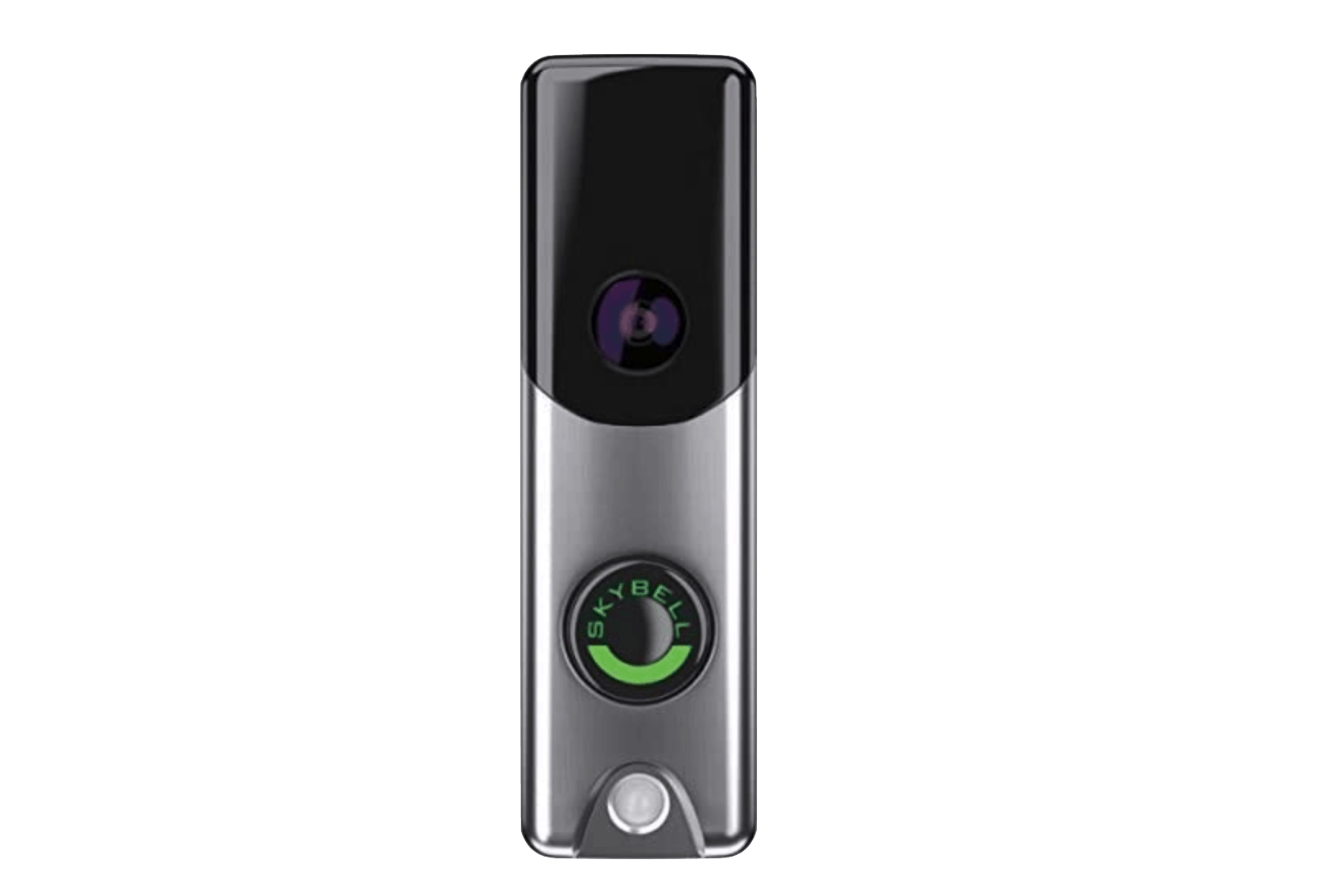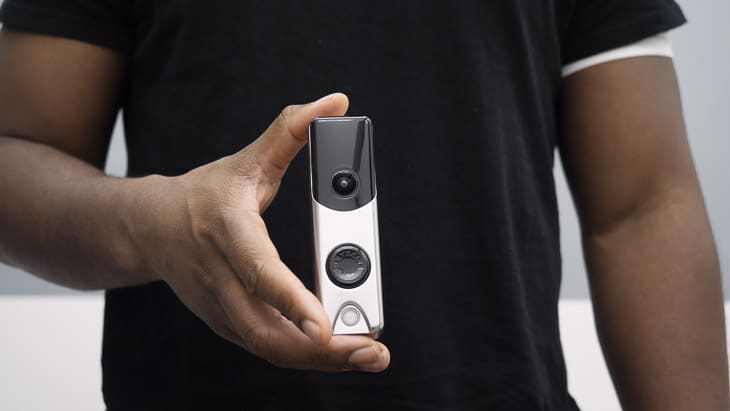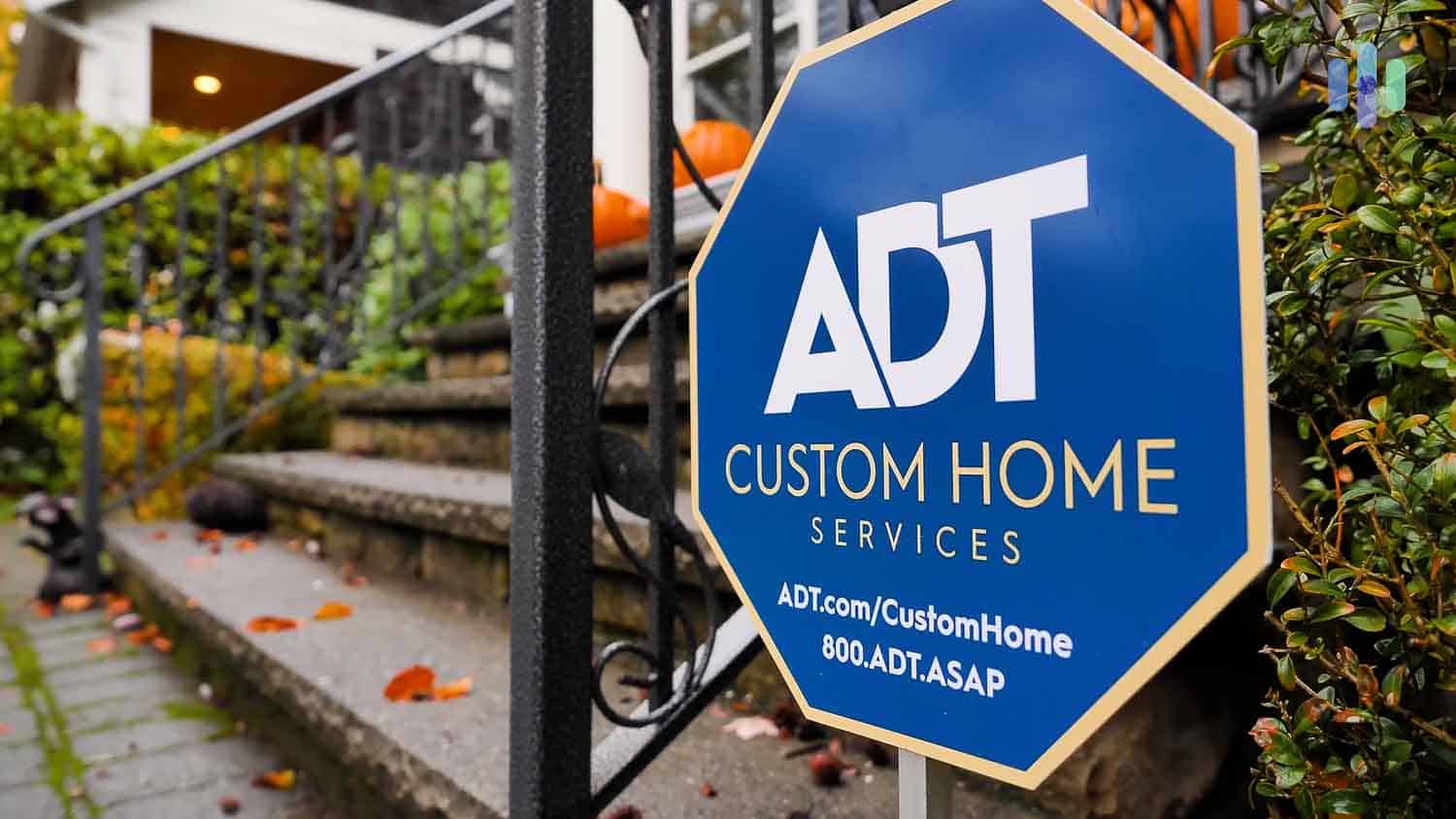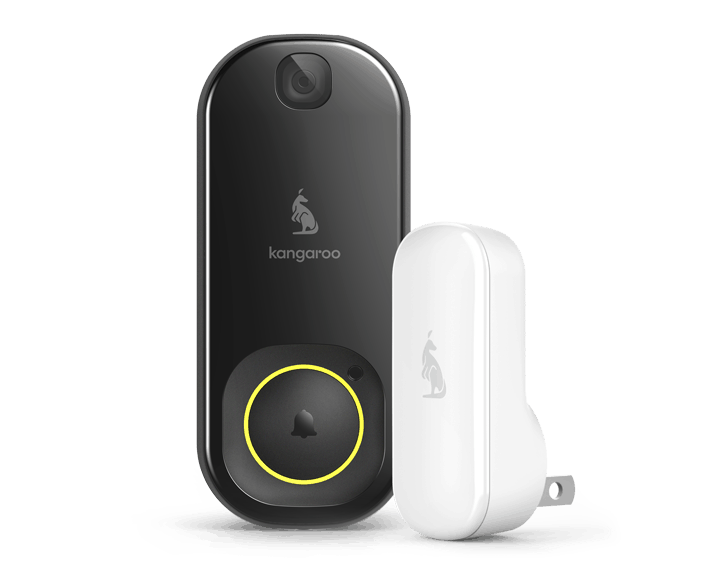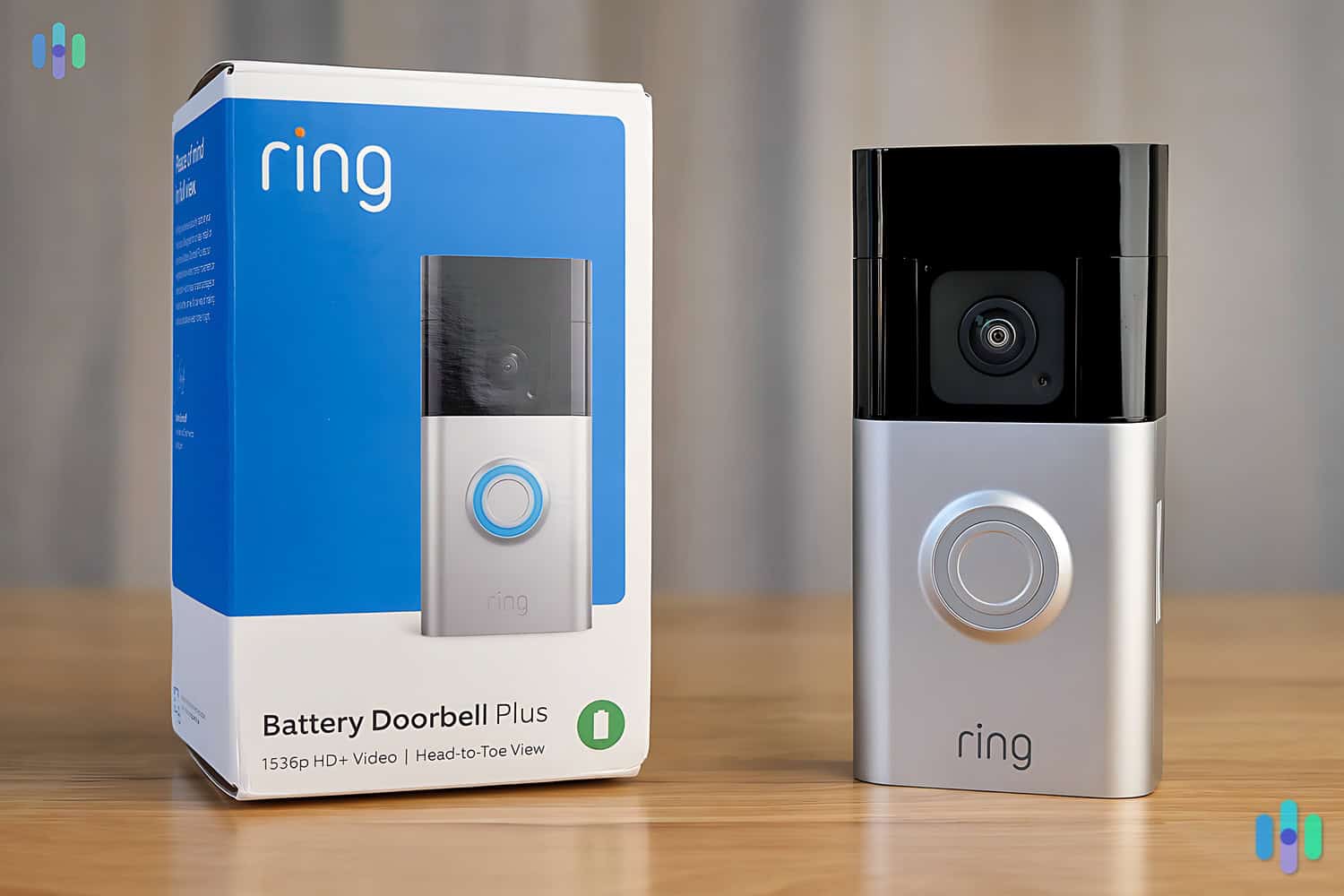SkyBell Video Doorbell Camera Review
SkyBell offers an award-winning video doorbell in two form factors, and 7 days of recorded video storage included in the price. It’s one of the few video doorbells on the market that offers a color night vision view.
 Paul Frew, Home and Digital Security Expert
&
Paul Frew, Home and Digital Security Expert
&
 Gene Petrino, Home Security Expert
Last Updated on Dec 05, 2025
Gene Petrino, Home Security Expert
Last Updated on Dec 05, 2025
What We Like
- Offers both wired and wireless doorbell options
- One of the few doorbells with color night vision
- Operates between -40 degrees and 140 degrees Fahrenheit
What We Don't Like
- No person detection available
- Mobile apps don’t always deliver motion alerts
- No local video storage options
Bottom Line
Looking to secure your front door with smart video technology? You’re not alone. With 155 patents issued and over 40 more pending, SkyBell is one of the leading video doorbell companies in the United States today. Currently, they offer two different options on their website: the wireless or hardwired SkyBell Trim Plus and the hardwired SkyBell HD. We bought and tested them both to see how they compare. Let’s dive into what these doorbells offer and whether they’re worth your investment.
Key Features
| Resolution | 1080p HD |
|---|---|
| Field of view | 120 degrees |
| Night vision | Color night vision |
| Live streaming | Yes |
| Motion detection | Yes |
- Attractive modern design aesthetic
- Smart home automation integrations
- Mobile alerts and mobile access/controls
SkyBell Doorbell Camera Analysis
| Skybell HD | SkyBell Trim Plus | |
|---|---|---|
| Price | $199.00 | $199.00 |
| Operating temperature | -40-140 F | -40-140 F |
| Hard-wired or battery | Hardwired | Either |
| Battery life, if applicable | N/a | 3-5 years |
| Video Quality | 1080p | 1080p HD |
| Field of View | 120° | 120° |
| Field of Zoom | 5x | 5x |
| Two-Way Audio | Yes | Yes |
| Night vision: Infrared or bright white? | Color | Color |
| Local Storage | No | No |
| Cloud Storage | Free 7 days | Free 7 days |
| Subscription Required? | No | No |
| Smart platform integration | Alexa, Google Assistant, Nest Protect, Nest Cams | Google Assistant |
| Artificial intelligence | None | None |
| Installation Requirements | 10-36 VAC | SkyBell Digitial doorbell adapter |
| Extras | Silencer, screenshots | Silencer, screenshots |
| App | SkyBell HD | SkyBell HD |
Note: Shopping online, you may also see a device called the SkyBell Slim Line. This device uses the same hardware as the Trim Plus, but has worse video quality, so we recommend going with the Trim Plus.
SkyBell Video Doorbell Differences
When comparing these two models, the similarities far outweigh the differences – and that’s intentional. We’ve all heard the saying “don’t fix what isn’t broken” and SkyBell really takes that saying to heart. All of their products are surprisingly similar despite a massive difference in looks. This means you get the same great firmware, pricing, and quality regardless of which design you like better. The two models also have a couple of differences in the way they’re installed and their smart home capabilities.
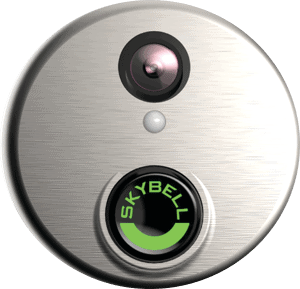
Design and Power
While the SkyBell HD is a circular device that needed to be hardwired into our mechanical doorbell setup, the Trim Plus is a long rectangular device that’s battery-powered or hardwired, depending on your choice (we always op for battery when it’s available, and the Trim Plus was no exception).
The battery in the Trim Plus lasts three to five years according to SkyBell. In our 18 months of testing, the battery performed consistently without requiring replacement. The HD, on the other hand, is dependent on our home’s power, so we noticed that it didn’t work during a summer blackout. For those concerned about power outages, consider adding an uninterruptible power supply (UPS) to your home’s doorbell circuit as a backup solution.
Installation
This was one of the biggest differences between the HD and the Trim Plus. Since they have different power sources, the HD required that we fully replace our existing doorbell while the Trim Plus let us place it next to the door frame without removing our current doorbell. Here’s an overview of the installation process for both models:
- SkyBell HD: Out with the old and in with the new, we thought to ourselves as we removed our existing doorbell. Next, we screwed the SkyBell HD’s base plate in and attached the wires before putting the actual HD doorbell on the mounting plate. From there, all we had to do was lock it into place with a small tool they provided. Three rotations was all it took to secure our HD into our home!
- SkyBell Trim Plus: While we could have installed the Trim Plus the same way as the HD, we opted to use its battery power. The installation took less than 15 minutes from start to finish. We simply mounted it on our outer door frame and replaced our chime with the SkyBell Digital doorbell adapter, which we bought separately.
Alexa and Nest Integrations
We controlled the SkyBell HD using Alexa-powered Amazon Echo. The Echo represents over 60 percent of the smart speaker market,1 so we hope SkyBell makes Alexa work with the Trim Plus as well.
We’re huge fans of Nest in general, so when SkyBell announced that the SkyBell HD worked with Nest cameras and Nest Protect, their smoke and CO sensor, we were excited to test it out. This integration creates a comprehensive security ecosystem. When our SkyBell HD detects motion, it can trigger our indoor Nest cameras to start recording, giving us multiple angles of any security event.
Now, the other way we connected Nest and SkyBell was through Nest Protect, an incredibly impressive smoke and CO detector that we’ve tested out previously. Once, after leaving cookies in the oven for too long, our smoke detector went off with its siren and colored lights. But because we’d integrated the two in the SkyBell HD app, our video doorbell also blinked red, which signaled to any visitors that, well, now is not a good time.
While the Trim Plus currently lacks these advanced integrations, SkyBell may add them through firmware updates in the future. They both also lacked an Apple Home Kit integration if you use Apple products for voice control in your home.
SkyBell Video Doorbell Similarities
With both products coming in at a similar price point and from the same manufacturer, you probably assume they have a lot in common. Well, your assumption is correct. They have a whole lot in common from their specifications to the way you interact with them. Here’s a complete list of the similarities between the SkyBell Trim Plus and the SkyBell HD:
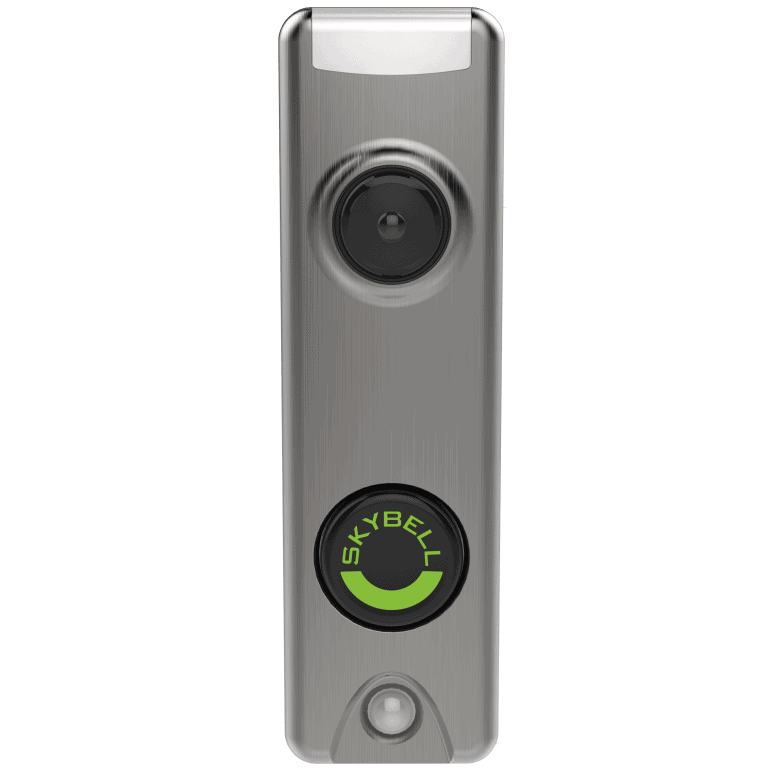
Price
We paid the exact same price for the HD and the Trim Plus, $199. We paid about the same amount for other video doorbells that we’ve tested out, namely the Ring Peephole Cam that we reviewed, which has similar features, so SkyBell’s pricing is definitely fair.
Durability
Both doorbells offer weather resistance, protecting them from dust, rain, and extreme temperatures. Living in New York, the temperature ranges from about 10 degrees all the way up to 100 on the hottest days, so we knew we needed a video doorbell that could handle it all. Fortunately, the HD and the Trim Plus fared nicely throughout the year, and would even work in a more extreme climate. With a temperature range of negative 40 to 140 degrees Fahrenheit, they’re actually some of the more durable video doorbells that we’ve tested out!
Video
Of course, the main objective of a video doorbell in the first place is to show us exactly who’s at our door without us having to go downstairs and open it like we’re in 1972. With both SkyBell video doorbells, the image we got from the cameras was very clear, the 1080p HD display that we’ve come to expect. With 120 degree fields of view, the cameras captured all of our property and not too much of our neighbors, which really helped to limit notifications. If you want a wider field of view, check out our review of the Vivint Doorbell Camera which features a 180-degree field of view. The 5x digital zoom allowed us to clearly read package labels and identify delivery services from the footage. Overall, the video quality on the SkyBell doorbell cameras was excellent.
Note: Want to see how SkyBell compares with the rest of the video doorbells we’ve tested? If so, check out our best Video Doorbell Cameras of 2026 to see the list of our top picks.
Audio
Both doorbells feature clear two-way audio with noise cancellation. This allows for natural conversations without the walkie-talkie effect found in cheaper models. Good news: each SkyBell doorbell camera comes equipped with speakers and microphones, so we could greet our guests from anywhere in the world. For example, when we got mail while on a vacation, we were notified immediately because our cameras detected movement. From there, we opened the SkyBell HD app, greeted our mail carrier, and told him to just place our letters in the paper bag we left out. We also enjoyed giving warm welcomes to our friends and family right when they knocked on our door.
Night Vision
The night vision was where things got a bit dicey. Both the HD and the Trim Plus showed our night footage in color, as they both have bright white lights that shine in people’s faces. While we liked the footage we got (which certainly looked less like the show CSI than it would’ve been from infrared LED sensors), many of our guests complained that they felt a bit, well, under the spotlight when coming over after dark. If discretion matters to you, consider a doorbell camera with infrared night vision instead.
Storage
With so many memorable friends coming over, we wanted to store that footage for safekeeping. The SkyBell HD app stored our recorded footage for a week, and within that time, we downloaded anything we wanted to keep on our hard drive, i.e local storage. Sure, it would’ve been more convenient if the devices had slots to record straight on micro-SD cards, but we were still able to back up our footage, and a week of cloud storage for free is pretty generous. Good news for your wallet, with SkyBell, there are no monthly fees whatsoever.
Motion Detection
We got notified whenever either of our video doorbells detected motion, and since we live in New York City, that was pretty often. The motion detection zones helped reduce false alerts by allowing us to exclude high-traffic areas like sidewalks or neighboring properties. Still, we wish that SkyBell put person detection into their doorbells so that we’d only be notified if they detected people, but maybe that’s an update they can implement later. Fingers crossed!
Google Assistant Integrations
Alexa’s not the end all be all when it comes to smart home voice assistants; we have a number of Google devices in our home, like the Nest Hub, so we wanted to control our Skybell doorbells using Google Assistant, as well. Unlike Alexa, we could have Google Assistant control both the HD and the Trim Plus, with simple commands like “Talk to Skybell”, to speak with our visitors, and “Ask Skybell to take video” which we displayed on our Hub. However, we couldn’t put our doorbells on silent mode through Google Assistant; rather, we did this manually through the SkyBell HD app. Which brings us to our next point…
Silent Mode
The Do Not Disturb feature allows you to schedule quiet hours, automatically silencing the chime. Some days we just want to sleep in and ignore the outside world and for those times, we put our doorbells on silent so that the chime wouldn’t sound. Of course, we were still notified on our phones, but the zen vibe of our home wasn’t negatively affected by unwanted visitors. Also, when we had a friend and her baby stay over, we used the silence mode to avoid waking the baby up during naps.
Snapshots
Aside from saving videos from our SkyBell video doorbells, we also took snapshots, otherwise known as screenshots, of our footage. The snapshot feature captures still images, perfect for sharing with neighbors through community safety apps or filing police reports if needed. Since this is already a feature on the iPhone, we weren’t terribly impressed with this, but for someone who doesn’t know how to do screenshots, SkyBell makes it easy to do in their app or through voice commands with Google Assistant, as we mentioned above.
The SkyBell HD App
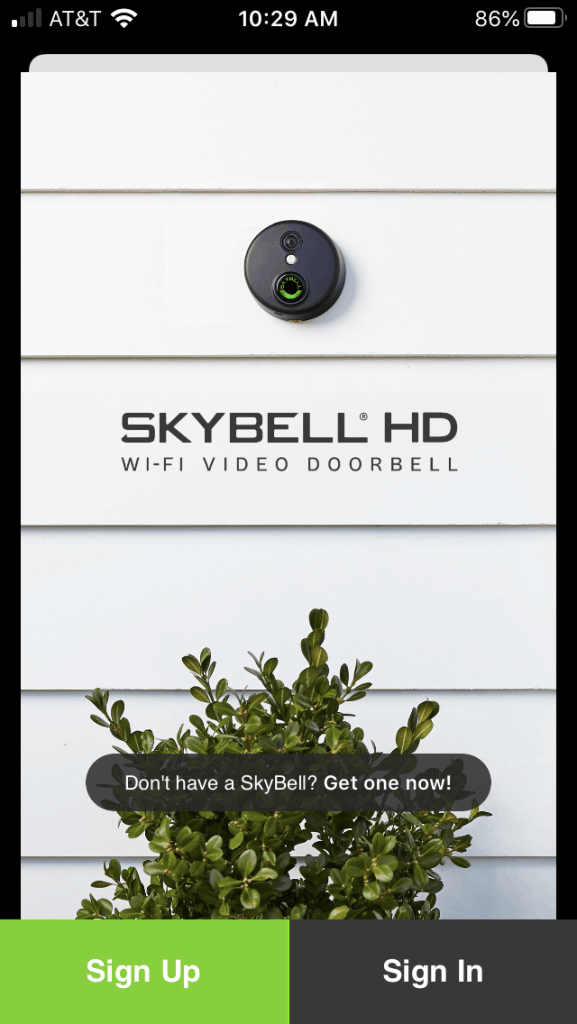
We controlled both SkyBell video doorbells on the SkyBell HD app when we weren’t home. Whether it was viewing our live feed and talking to guests, downloading our old footage onto our phones, or turning on the silencer, it all happened within the same app.
Unfortunately, the app has not kept up with the times. We noticed frequent reliability issues. Sometimes it would struggle to connect to our video doorbell. Motion alerts also frequently arrived 30 to 60 seconds after events. Clearly, having a user-friendly app isn’t SkyBell’s strong suit, at least not now.
Note: If you buy your SkyBell doorbell from their website, use the SkyBell HD app. However, if you bought it from a third-party seller like Alarm.com or Honeywell, you’ll control it through their respective apps. Honeywell recently updated their home security app calling it Resideo and it’s been getting great reviews on both Android and iOS. So, if you want to avoid bad mobile apps, buying your SkyBell doorbell from Honeywell is a great solution.
Which SkyBell Video Doorbell Came Out On Top?
Since the SkyBell HD and Trim Plus doorbells have so much in common, your choice really comes down to your personal preferences.
Get the SkyBell HD if you’d like…
- Alexa, Google Assistant and Nest integrations
- Hardwired device
- Circular design
We recommend the SkyBell Trim Plus if you’re looking for…
- Google Assistant integration
- Wireless device
- Rectangular design.
While SkyBell definitely needs to improve its app, its devices are standard video doorbells that will definitely make your home more secure and convenient. Plus, you can get around using their low-quality app by purchasing your SkyBell through Honeywell instead.With this workaround, you essentially get professional-grade hardware at a consumer price point, fixing the main weakness we found with SkyBell’s direct-to-consumer offering.
-
Statista. (2025). Alexa, What's America's Favorite Smart Speaker?
https://www.statista.com/chart/23943/share-of-us-adults-who-own-smart-speakers/

